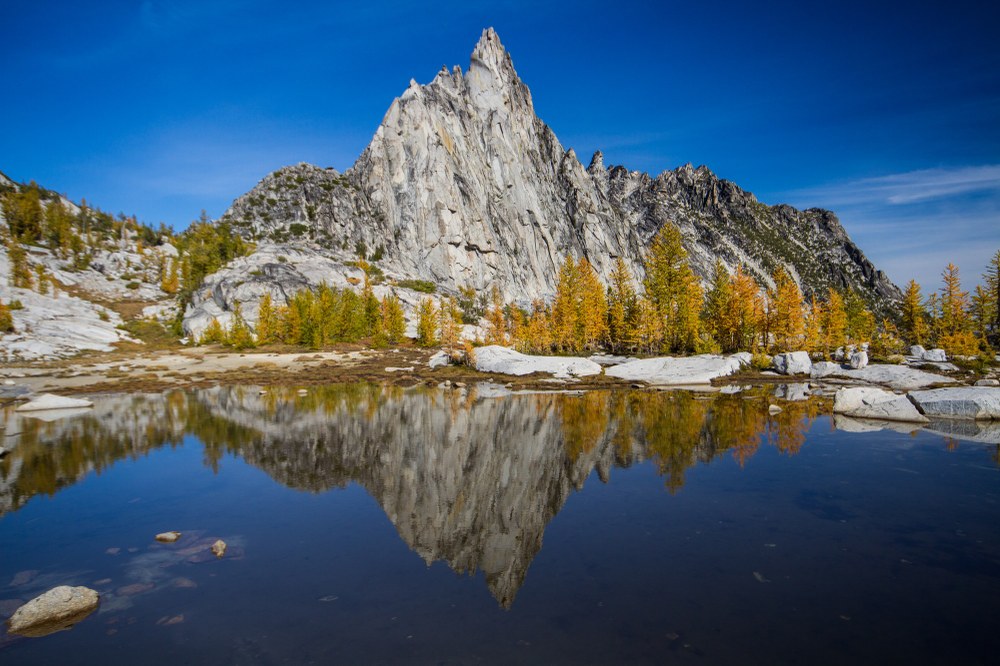
On August 4, 2020, the Great American Outdoors Act (GAOA) was signed into law. This historic victory was the result of years of work by the conservation and recreation community, including The Mountaineers. What does the Great American Outdoors Act mean for Washington state and the places we love to explore? The answer is both “a lot” and “we’re not quite sure yet.” The Mountaineers will be working hard over the coming months to make sure that communities and outdoor spaces in Washington maximally benefit from this new infusion of funding.
Before we look to what's next, be sure to thank your legislators for passing the Great American Outdoors Act. Follow up notes like this are incredibly powerful, and help set the stage for more conservation victories in the future. Use our easy action tool below - it just takes a few seconds.
There are two major pieces of the Great American Outdoors Act: full and permanent funding for the Land and Water Conservation Fund (LWCF) and new funding to maintain and restore parks and public lands. The funding from each of these pieces will trickle down to communities and places in Washington in separate ways.
Full and Permanent Funding for LWCF
If you’ve visited an urban park (like Discovery Park or Point Defiance Park) or recreated in the backcountry (like the Alpine Lakes Wilderness or Mount Rainier National Park), there’s a good chance those outdoor spaces were funded by the Land and Water Conservation Fund. This little known federal grant program is one of the most effective tools we have to conserve land and improve outdoor recreation opportunities - many of the places we love to play would not exist without LWCF.
This funding comes from offshore oil and gas drilling, not taxpayer dollars. However, Congress has historically diverted over half of its intended funding ($900 million annually) for other, non-conservation purposes. The Great American Outdoors Act will guarantee full funding for LWCF each year, doubling the amount of funding for parks and public lands.
What does that mean for Washington? According to the Seattle Times, the bill will increase Washington’s annual funding allocation from roughly $15 million to about $35 million. Projects that could be funded this year include major land conservation efforts like protecting Nason Ridge near Stevens Pass and conserving over 4,000 acres of forest along I-90 in the Central Cascades, as well as more recreation opportunities for urban communities like the creation of a new park in the diverse Rainier Valley neighborhood of Seattle. Without additional funding provided by the Great American Outdoors Act, some of these projects would not become reality. And thanks to GAOA, more projects in Washington will be funded every year in perpetuity.
Funding to restore and maintain parks and public lands
More and more people visit our national parks and public lands each year, but Congress hasn’t kept up with enough funding to repair roads and bridges, improve trails and campgrounds, and tackle necessary projects like wastewater and electrical system upgrades. The Great American Outdoors Act will provide up to $1.9 billion per year (for up to five years) for deferred maintenance and restoration of our national parks and other public lands.
National parks alone in Washington need more than $427 million in deferred maintenance. Some of these projects include upgrading a nearly 50-year-old water treatment system at Olympic National Park, making storm-related road repairs at Mount Rainier, and improving trails and campgrounds in our National Forests. The Seattle Times reports that our state may receive as much as $250 million in funding for these critical needs over the next five years.
Since this is a new funding stream, we don’t know exactly how the dollars will be distributed. The Department of the Interior is developing a strategy to implement GAOA, including a project proposal and review process. The bill gives a 90-day period for a list of priority deferred maintenance projects to be submitted to Congress. Regions and parks across the country will have an opportunity to put forward projects that might qualify for this funding. Projects to be funded in Fiscal Year 2021 must be “ready to be implemented.”
While it’s exciting that priority projects could begin quickly, the tight time frame puts a lot of pressure on our agency partners during the busy summer season. We’d also like to see public engagement opportunities at the local and federal levels. The Mountaineers is committed to ensuring that these funds are directed towards priority projects in our region, and we’ll make sure to keep you updated.
Don't forget to thank your legislators for passing the Great American Outdoors Act. Use the easy action tool below to send your representatives a quick note of appreciation.
 The Mountaineers
The Mountaineers